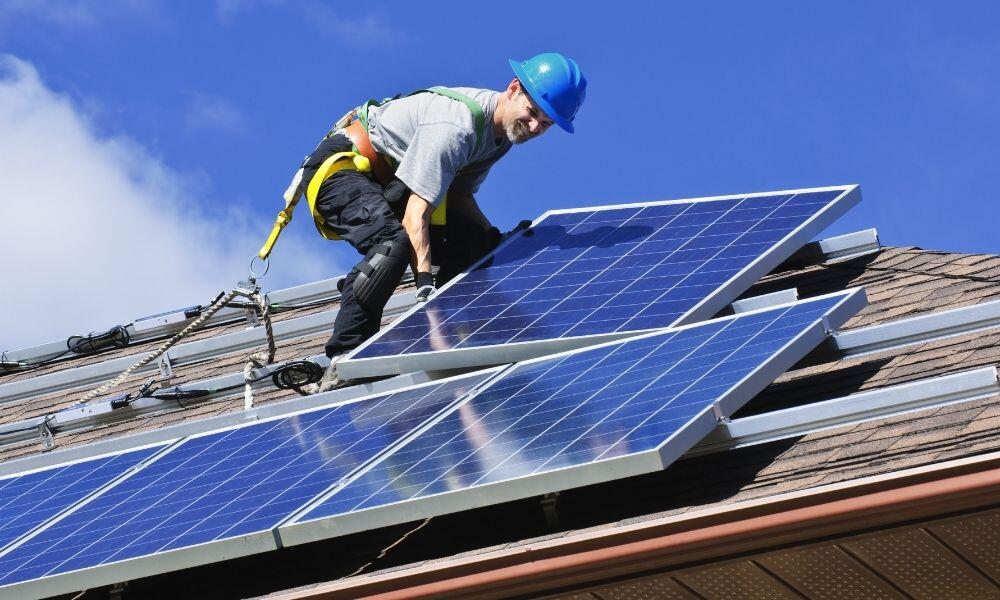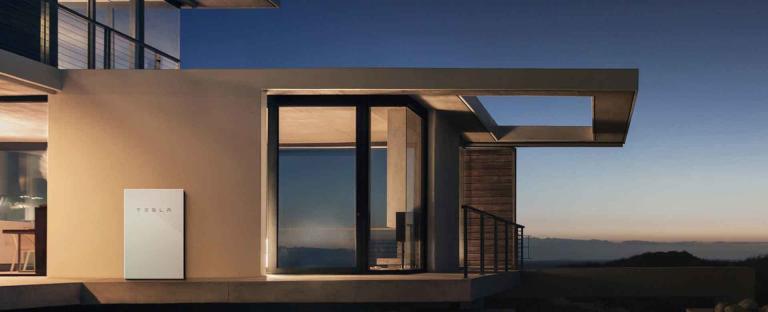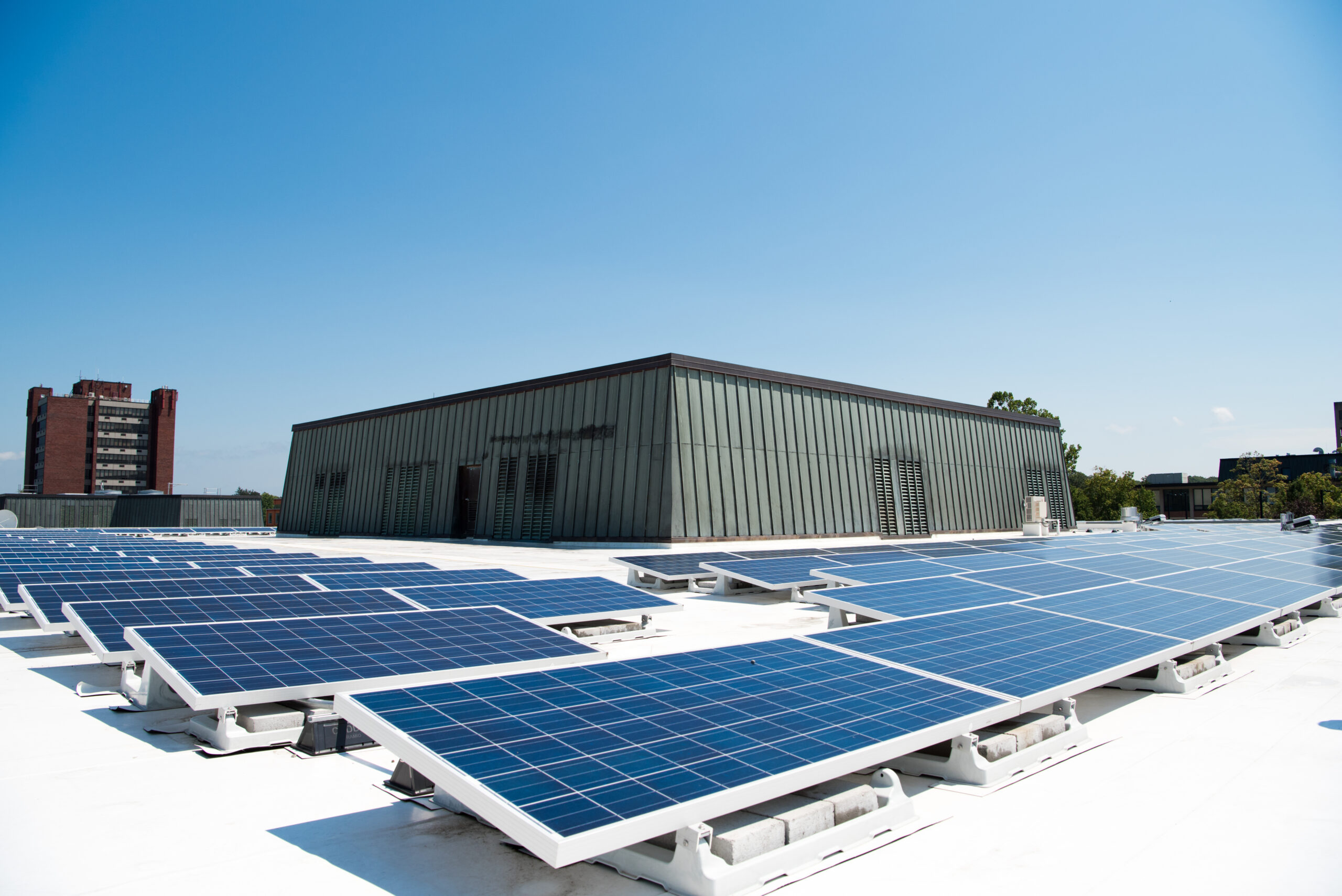Solar energy use in WNY triples in last 3 years
Government incentives, cost decline are credited
Dr. Bernard J. Kolber is a big fan of solar energy.
The Amherst dentist has installed solar panels on the roof of both his dental practice and his Clarence home – a decision he said has shaved 30 to 40 percent off his home’s electric bills while helping to reduce the reliance on conventional power sources, such as coal and natural gas, whose emissions contribute to global warming.
“I call it a no-brainer,” said Kolber, who also serves on the Clarence Town Board. “It just made sense – economic sense, as well as ‘green’ sense.”
Kolber isn’t alone. The amount of electricity generated from solar energy tripled in Western New York over the last three years, thanks to a combination of lucrative government incentives and a steady decline in the cost of rooftop solar energy systems, according to a new report from the New York State Energy Research and Development Authority, or NYSERDA.
While the report highlighted the rapid growth of solar energy across the state, it also showed that solar power remains a tiny part of the state’s overall electricity-generating capacity, equal to less than 1 percent of the potential output from all of New York’s power plants.
Still, state officials said the growth in solar energy capacity across the state, which quadrupled from 2011 to 2014, is a sign that solar power is becoming a more significant factor in meeting the state’s energy needs.
By the end of last year, New Yorkers had installed enough solar energy-generating capacity to produce 314.5 megawatts of electricity – enough to meet the needs of 51,000 homes, the report found. New York ranked seventh among the states for installed solar energy capacity last year, moving up from ninth in 2013, according to the Solar Energy Industries Association. But that’s just 10 percent of the more than 3,500 megawatts of solar power that was installed in California by the end of last year.
Adam K. Rizzo, president of Solar Liberty, an Amherst-based solar energy systems installer, sees the growth of solar energy in New York firsthand.
The company has more than 25 megawatts of commercial and residential solar energy projects in the works for this year – more than the generating capacity of all of the solar power systems that the company has installed since Solar Liberty was founded more than a decade ago.
“Every year since we started, solar has gained popularity,” Rizzo said. “We have more leads and more interest in solar going forward.”
Incentives that help bring the cost of solar energy systems low enough that they can be competitive with utility-generated electricity are a big part of solar power’s growth.
In addition to a 30 percent federal tax credit on new solar energy systems, the state is offering $1 billion in incentives for larger-scale solar projects through its NY-Sun initiative.
“The most economical way to get customers solar is through different financing mechanisms, Rizzo said. “The New York State program right now offers customers a very attractive way to go solar with low to zero out-of-pocket costs.”
As the industry has grown, the cost of solar energy systems also has dropped. System costs fell by 8 percent last year and have declined by 49 percent since 2010, according to the Solar Energy Industries Association, a national trade group. The 538 companies in New York that do work within the solar energy industry provide jobs to more than 7,000 people across the state, the group said.
State officials said the incentives are playing a key role in helping the solar energy industry grow and gain the scale it needs to further reduce costs and get closer to the point where it can compete with utility-produced power without subsidies.
“New York State is doing what needs to be done to scale up this renewable resource, and move toward a sustainable solar industry,” said John B. Rhodes, president of NYSERDA.
As solar energy system costs have dropped, so have the subsidies. A decade ago, solar installations in upstate New York received financial incentives through the state equal to $4 to $5 a watt. It’s now 60 cents a watt.
“The costs are decreasing. The permitting is becoming more streamlined,” Rizzo said. “All of these things are totaling up to make solar more economical.”
Most of the activity in the state’s solar energy market has been concentrated in an area from the Capital District, down the Hudson River to New York City and Long Island. That 22-county area accounts for almost 80 percent of the solar energy-generating capacity in place by the end of last year, the report found.
A big reason for the more rapid expansion of solar power in the eastern part of the state is the higher electricity prices there, especially downstate. With utility-generated power costing more there than it does in Western New York, it’s easier for residents and businesses to install solar energy systems and have them make economic sense.
Roughly 30 percent of that generating capacity was on Long Island, where the residential solar market has grown more rapidly, partly because of the presence of SolarCity, the nation’s biggest installer of residential rooftop systems. The second-biggest market is in the mid-Hudson Valley, where 20 percent of the state’s installed solar capacity is located, the report said.
In contrast, the 15.8 megawatts of solar capacity that have been installed in Western New York accounts for just 5 percent of the state’s solar capacity. Nearly 80 percent of the region’s solar-generating capacity is located in Erie County, which has enough solar panels installed to generate up to 12.6 megawatts of electricity. Just four years ago, there was only 5 megawatts of solar-generating capacity installed in Western New York.
While solar energy systems have been installed at nearly 26,000 locations throughout the state, by businesses and residents to schools and government entities, less than 4 percent of the sites – 955 in all – are in Erie, Niagara, Allegany, Cattaraugus and Chautauqua counties, the report found.
Solar power is only a minor factory in the rest of Western New York. The solar energy systems installed in Niagara County can produce 1.7 megawatts of power, or less than 1 percent of the statewide total, while the generating capacity in Allegany, Cattaraugus and Chautauqua counties is below 1 megawatt apiece, the report found.
Proposed regulatory reforms, coupled with the state incentives available under the NY-Sun initiative, are making it easier for businesses to install solar energy systems, said Richard L. Kauffman, state chairman of energy and finance and NYSERDA board chairman.
Rizzo said, “The economics are important to anyone making the investment. But I think it’s also a general desire of individuals and businesses to gain control of their energy and its usage.
“It’s energy independence to take control and produce your electricity as it’s needed.”




